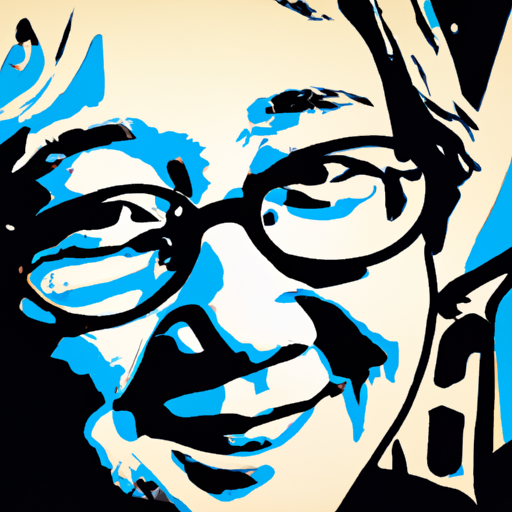
-
Table of Contents
- The Art of Pen and Ink Drawing for Graphic Design
- The Basics of Pen and Ink Drawing
- The Benefits of Pen and Ink Drawing in Graphic Design
- Applications of Pen and Ink Drawing in Graphic Design
- Logo Design
- Illustrations
- Typography
- Textures and Patterns
- Case Studies: Successful Use of Pen and Ink Drawing in Graphic Design
- Case Study 1: Penguin Books
- Case Study 2: The New Yorker
- Case Study 3: The Art of Hand-Lettering
- Tips for Mastering Pen and Ink Drawing
- Summary
The Art of Pen and Ink Drawing for Graphic Design

Pen and ink drawing is a timeless art form that has been used for centuries to create stunning illustrations and designs. In the world of graphic design, pen and ink drawing can add a unique and personal touch to any project. Whether you are a seasoned graphic designer or just starting out, mastering the art of pen and ink drawing can greatly enhance your skills and open up new creative possibilities. In this article, we will explore the techniques, benefits, and applications of pen and ink drawing in graphic design.
The Basics of Pen and Ink Drawing
Before diving into the world of pen and ink drawing, it is important to understand the basics. Pen and ink drawing involves using various types of pens, such as dip pens, fountain pens, or technical pens, to create lines and textures on paper. The ink can be applied in different ways, including hatching, cross-hatching, stippling, or using washes to create gradients.
One of the key advantages of pen and ink drawing is its versatility. It can be used to create intricate and detailed illustrations, as well as bold and expressive designs. The contrast between the black ink and the white paper can create a striking visual impact.
The Benefits of Pen and Ink Drawing in Graphic Design
Pen and ink drawing offers several benefits for graphic designers:
- Uniqueness: In a world saturated with digital designs, pen and ink drawings stand out. They have a handcrafted and personal feel that can make a design feel more authentic and memorable.
- Detail and Precision: Pen and ink drawing allows for precise control over lines and textures, making it ideal for creating intricate details and patterns.
- Texture and Depth: The use of different techniques, such as cross-hatching or stippling, can add texture and depth to a design, giving it a three-dimensional feel.
- Timelessness: Pen and ink drawings have a timeless quality that can transcend trends and fads. They can evoke a sense of nostalgia or classic elegance.
Applications of Pen and Ink Drawing in Graphic Design
Pen and ink drawing can be applied in various ways in graphic design:
Logo Design
A well-executed pen and ink drawing can serve as the foundation for a unique and memorable logo. The precision and detail of pen and ink drawings can help create a logo that stands out from the crowd.
Illustrations
Pen and ink drawings are widely used in book illustrations, editorial illustrations, and even in digital illustrations. They can add a touch of authenticity and personality to any project.
Typography
Pen and ink drawings can be used to create custom lettering and typography. The hand-drawn quality of the lines can give typography a unique and artistic flair.
Textures and Patterns
Pen and ink drawings can be used to create textures and patterns that can be applied to various design elements, such as backgrounds, borders, or overlays. The versatility of pen and ink drawing allows for endless possibilities.
Case Studies: Successful Use of Pen and Ink Drawing in Graphic Design
Let’s take a look at some real-world examples of successful use of pen and ink drawing in graphic design:
Case Study 1: Penguin Books
Penguin Books is known for its iconic book covers featuring pen and ink illustrations. The use of pen and ink drawings gives their covers a classic and timeless look, while also capturing the essence of the stories within.
Case Study 2: The New Yorker
The New Yorker magazine often features pen and ink illustrations in its articles and covers. These illustrations add a unique and artistic touch to the magazine’s content, making it visually engaging and memorable.
Case Study 3: The Art of Hand-Lettering
Many graphic designers have embraced the art of hand-lettering, using pen and ink drawings to create custom typography. This trend has gained popularity in recent years, as it adds a personal and authentic touch to designs.
Tips for Mastering Pen and Ink Drawing
Here are some tips to help you master the art of pen and ink drawing:
- Experiment with Different Pens: Try different types of pens to find the one that suits your style and preferences. Each pen has its own unique characteristics and can produce different effects.
- Practice Different Techniques: Hatching, cross-hatching, stippling, and washes are just a few of the techniques you can explore. Practice each technique to develop your skills and discover new possibilities.
- Study the Masters: Look at the work of renowned pen and ink artists to gain inspiration and learn from their techniques. Analyze their use of lines, textures, and composition.
- Combine with Digital Tools: Pen and ink drawings can be scanned and digitized, allowing you to combine them with digital tools and techniques. This opens up even more possibilities for experimentation and refinement.
Summary
Pen and ink drawing is a valuable skill for graphic designers. Its uniqueness, detail, and timeless quality make it a powerful tool for creating memorable designs. Whether used in logo design, illustrations, typography, or textures, pen and ink drawings can add a personal and authentic touch to any project. By mastering the art of pen and ink drawing and combining it with digital tools, graphic designers can unlock new creative possibilities and set their work apart from the crowd.
